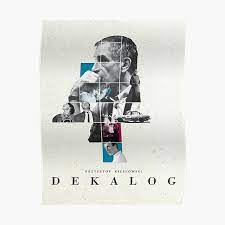I wrote these Program Notes for the screening of Drácula (1931), at the Billy Wilder Theater, Hammer Museum, Los Angeles, October 29, 2022.
Also, like Verbena trágica, the Library of Congress selected Drácula for preservation in the National Film Registry, finding it “culturally, historically, or esthetically significant”.
Drácula is an interesting example how film esthetics (the horror genre), an innovation (sound) and the business of the Dream Factory intersect in cinema history.
The wonderful documentary by Kevin Brownlow, Universal Horror (1998) is a trip through the highlights of these films, featuring the parallel stories of Dracula and Drácula. Well worth watching as a companion piece to this screening. (2)
The Spanish version was shot between October and November 1930, using the same sets of the English version, starring Hungarian-born Bela Lugosi (the vampire reference par excellence) as Count Dracula and Helen Chandler as Mina, the virginal English woman who becomes his victim.
In an interesting choice of casting by producer Paul Kohner, in charge of the foreign-version productions at Universal, a very young Mexican actress, Lupita Tovar became Mina’s Hispanic version, Eva, equally virginal looking, but costumed in sexy outfits. In her charming memoir, published in 2011, Lupita Tovar devotes a chapter to her second film for Universal, after establishing herself in La voluntad del muerto (1930), the Spanish version of The Cat Creeps.
“George Melford was hired to direct, with a cast including Carlos Villarías, Pablo Álvarez Rubio, Barry Norton (from Argentina), Carmen Guerrero, Manuel Arbó, Eduardo Arozamena and me. We used the same sets and the same script translated into Spanish, but a completely different crew led by cameramen George Robinson. Paul [Kohner] was the supervising producer of both films but his heart was with our version. We shot at night, while the English-speaking cast filmed during the day. The American version had started two weeks earlier so we were able to use the sets they had already finished with.
Only Carlos Villarías, who played Count Drácula, was allowed to see dailies. He was encouraged to be as “Lugosi-like” as possible. The rest of the us were on our own. Paul wanted our film to be better than the English-language version. George Robinson, our lighting cameraman, lit our sets with creepy shadows and added cobwebs everywhere. My nightgown was much sexier than the one Helen Chandler were and, perhaps because we were filming at night, our actors seemed even more menacing.
We had tremendous respect for our director George Melford. He was like a god to us. But there was some tension on the set because we knew we were competing with the American Dracula; we felt pressure to perform better than them. We were trying so hard. We finished our film in only twenty-two nights; the American version took seven weeks." (3)
Pancho Kohner - the son of Lupita Tovar and Paul Kohner, who were married in 1932 - recounted how Drácula, unseen for decades and hence barely warranting a mention in film history books, was found in a New Jersey warehouse in the 1970s. The American Film Institute made a print for a Universal Studios retrospective at the Museum of Modern Art. But the nitrate negative had begun to decompose and was incomplete. The only other existing print was found at the Cinemateca de Cuba, and after some maneuvering by the UCLA Film and Television Archive, navigating Cold War era restrictions, a new negative was struck in 1991. Drácula “resuscitated” in Havana, as the program notes for a screening of the restored film in Cuba cheekily noted. And the film has been available since, as a bonus material for the DVD and BluRay releases of the original Dracula. (4)
One final note, the grandchildren of Lupita Tovar and Paul Kohner, the filmmakers Chris and Paul Weitz (About a Boy, A Better Life, Fatherhood, Operation Finale) are writing and directing Spanish Dracula, what else but the love story of their grandparents during the filming of the Spanish version. (5)
Notes
(1) As noted by film historian Lisa Jarvinen, 30% of Hollywood trade was with Latin America. The Rise of Spanish-Language Filmmaking: Out from Hollywood's Shadow, 1929-1939 (2012).
For a recent survey of these films aimed at the Hispanic market, see Juan B. Heinink and Robert G. Dickson, “Cita en Hollywood”, in Hollywood Goes Latin. Spanish-language Cinema in Los Angeles, edited by María Elena de las Carreras and Jan-Christopher Horak (2019).
(2) Universal Horror (1998), directed by Kevin Brownlow. YouTube: https://www.youtube.com/watch?v=58L_iy6UV_4
(3) Lupita Tovar, The Sweetheart of Mexico. A Memoir. As Told to Her Son Pancho Kohner (2011). Chapter 15, pages 80-81.
(4) The saga of the missing parts, the Cuban discovery and the restoration is recounted by David J. Skal in Hollywood Gothic: The Tangled Web of Dracula from Novel to Stage to Screen (2004) and in Spanish by Reynaldo Gonzalez “Drácula resucitó en La Habana” (1991). See also Roberto Green Quintana, “Buried in the Vaults: The Restoration of Hollywood’s Spanish-language films”, in Hollywood Goes Latin. Spanish-language Cinema in Los Angeles, edited by María Elena de las Carreras and Jan-Christopher Horak (2019).
(5) Mike Fleming, “Chris & Paul Weitz to Direct Spanish Dracula; Love story of their Mexican silent film actress grandmother Lupita Tovar and storied Universal Exec Paul Kohner”. Deadline, February 15, 2022.









